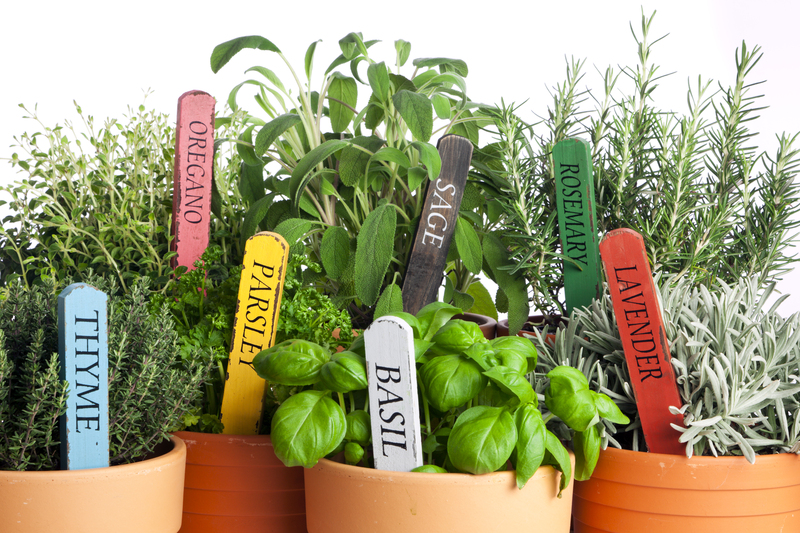Securing Your Garden from Intense Weather Threats
Posted on 23/05/2025
Securing Your Garden from Intense Weather Threats: A Comprehensive Guide
Weather extremes are becoming more frequent and severe, posing significant challenges to both amateur and professional gardeners. From torrential storms and unexpected hail to prolonged droughts and heatwaves, protecting your plants and landscaping investments requires knowledge, preparation, and adaptability. In this comprehensive guide, you'll learn proven strategies for securing your garden from intense weather threats, ensuring the resilience and longevity of your green space.
Understanding Intense Weather Threats to Gardens
Before diving into the strategies for protecting your garden from severe weather, it's crucial to recognize the main weather-related threats:
- Heavy Rain and flash floods
- Droughts and extended dry spells
- Heatwaves and high UV exposure
- Strong winds and hurricanes
- Hailstorms
- Frosts and sudden cold snaps
Each of these events can cause different types of damage--from destroying young shoots to uprooting entire trees. By understanding these dangers, you can implement targeted strategies to minimize harm and help your garden adapt.

Assessing Vulnerabilities in Your Garden
1. Site Assessment
Begin by performing a detailed assessment of your garden's current condition:
- Topography: Is your land sloped or flat? Are there low areas that collect water?
- Drainage: Does water easily accumulate after rains? Are there persistent puddles?
- Wind Exposure: Are there exposed sections highly susceptible to wind damage?
- Soil Type: Heavy clay and sandy soils have different responses to rain and drought.
2. Plant Vulnerabilities
Different plants have varying tolerances to stress.
- Shallow-rooted species are more prone to water stress and uprooting.
- Delicate or tender plants may be easily damaged by hail or frost.
- Native plants are often more resilient to local weather patterns.
Strategies for Securing Your Garden from Extreme Weather
1. Improving Garden Drainage
Excess water from heavy rain can lead to root rot, erosion, and plant death.
- Install French drains or swales to guide water away from sensitive areas.
- Raise garden beds to help excess moisture drain and protect roots.
- Use organic mulch to improve soil structure, allowing water to infiltrate more evenly.
2. Drought-Proofing Your Garden
Long dry periods can stress or kill plants unadapted to such conditions.
- Select drought-resistant plants, especially natives or species adapted to your region.
- Group plants with similar water needs together (known as hydrozoning).
- Apply thick mulch to conserve soil moisture and protect roots from heat.
- Install drip irrigation for efficient and targeted watering.
3. Shielding Your Garden from Strong Winds
Strong winds can break branches, uproot plants, and cause soil erosion.
- Plant windbreaks such as hedges, trees, or sturdy shrubs on the windward side.
- Use garden fencing or screens as temporary or supplemental wind barriers.
- Stake young trees and large perennials to provide support.
4. Protecting Against Hail and Heavy Rain
Sudden deluges and hailstorms can devastate new growth and mature plants alike.
- Install removable netting or fabric covers over vegetable beds and fragile plants during warnings.
- Employ row covers or cloches to shield seedlings and young plants.
- Consider greenhouses or cold frames for high-value or sensitive crops.
5. Coping with Heatwaves
Extreme heat can cause wilting, sunscald, and even plant death.
- Plant shade trees or use shade cloths to protect sun-sensitive plants.
- Water deeply and early in the day to help plants cope with midday heat.
- Use reflective mulches or whitewashed surfaces to reduce soil temperatures around roots.
6. Preventing Frost Damage
Late frosts or sudden cold snaps can devastate spring blooms and tender vegetation.
- Monitor weather forecasts and cover plants with frost blankets or row covers ahead of cold nights.
- Water soil before a frost event--moist soil holds heat better, protecting roots.
- Choose cold-hardy varieties and plant the most vulnerable species in protected microclimates (against south-facing walls, etc.).
Smart Garden Design: Building Resilience
Resilient gardens start with smart design choices:
- Layered planting (groundcovers, shrubs, trees) minimizes soil exposure and wind impact.
- Diverse plantings ensure that some species will thrive under a range of weather conditions.
- Utilize perennial plants and deep-rooted species for greater stability and less maintenance.
- Incorporate bioswales or rain gardens to manage excessive water naturally.
Building Soil Health
Healthy soil is the foundation for a weather-resistant garden:
- Amend soil with compost to improve water retention and drainage simultaneously.
- Regularly mulch beds to moderate temperature swings and maintain moisture.
- Encourage soil life (earthworms, beneficial microbes) for natural resilience.
Real-time Strategies During Intense Weather Events
Before a Storm or Heatwave
- Prune weak or dead branches to reduce wind damage risk.
- Secure loose pots and garden furniture that could become projectiles.
- Water thoroughly before dry, hot, or frosty events.
During the Event
- Monitor plants for stress, wilting, or damage (especially during prolonged heat or storm events).
- Temporarily shade or cover sensitive plants as needed.
After an Intense Weather Event
- Inspect for broken stems or branches and remove them promptly to prevent disease.
- Aerate compacted soil and replenish mulch if necessary.
- Provide extra water and gentle fertilizer to aid recovery.
Long-term Planning and Climate Adaptation
Choosing the Best Plants for Changing Conditions
- Research local native plants proven to withstand your regional weather extremes.
- Consider new varieties suited to anticipated future climate conditions.
- Rotate crops and refresh your garden layout annually to bolster biodiversity.
Invest in Resilient Infrastructure
- Install water storage systems--rain barrels, cisterns, or storage tanks--for drought resilience.
- Add permeable paving and rain gardens to prevent runoff and replenish groundwater.
- Reinforce fences, trellises, and supports to withstand strong winds.

Tips and Frequently Asked Questions About Protecting Gardens from Severe Weather
Can I make my garden 100% safe from severe weather?
While no garden can be completely immune to severe weather, combining multiple strategies greatly increases resilience and minimizes risk. Regular monitoring, maintenance, and adaptation are key.
How do I know which weather protection measures to prioritize?
Assess your local climate history and the specific vulnerabilities of your garden microclimate. Focus on the most common intense weather threats first (e.g., wind in coastal areas, drought inland), then address less frequent hazards.
What are the warning signs that my garden is not prepared?
- Poor drainage--persistent puddles or waterlogged plants
- Frequent wilting or sunscald during normal summer days
- Repeated wind damage to the same plants
- Visible soil erosion after rainstorms
These are all signs you may need to reassess your weather protection strategies.
Do I need professional help to secure my garden?
Many weatherproofing measures are DIY-friendly, especially when approached systematically. However, if you're dealing with large trees, major drainage changes, or construction, consulting an arborist, landscape architect, or local extension service is smart and often safer.
Conclusion: Building a Resilient Garden for the Future
Securing your garden from intense weather threats doesn't have to be overwhelming. Whether you're dealing with tropical storms, blistering heat, or surprise frosts, these challenges can be minimized through correct planning, plant choices, and garden design. Remember that a garden is a living, evolving system--resilience is built over time as you continually assess, adapt, and update your strategies.
The future of gardening lies not just in what we plant, but in how we anticipate and respond to the climate's challenges. By investing in weather protection now, you'll not only safeguard your greenery but also create a healthier, more sustainable retreat for years to come.
Stay proactive, stay informed, and enjoy the peace of mind that comes with knowing your garden is ready to face whatever weather comes its way!

